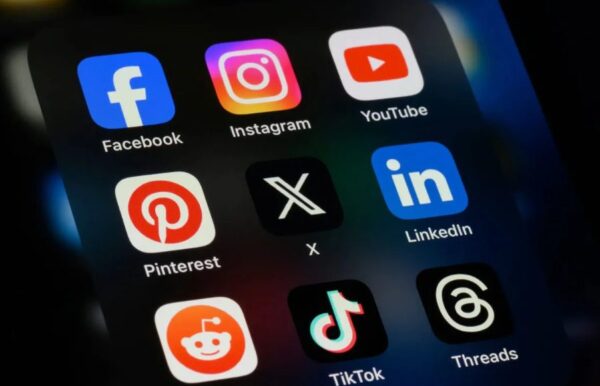Lifestyle
5 ways to effectively communicate with the millennial workforce

We have all heard of the stereotypes—quiet and antisocial millennials who can’t look you in the eye.
Often tagged as the “Me Generation”, millennials have a reputation for being lazy, entitled and too engrossed with their smartphones to connect with those around them—but are these stereotypes really the reality?
Millennials are the most ethnically, racially and socially diverse generation, and they have more college degrees than any previous generations. They value independence, collaboration and integrity.
Further, this generation cannot tolerate boredom; want to be challenged by their work and by their employers. So what does all this mean for organisations and senior leaders?
Business leaders must see millennials for their personality traits — extremely passionate, motivated and tech-savvy game-changers — and true leaders will rise to the challenge. This set of employees have a different style of working, communicate differently and value different things than baby boomers and the generation before them.
If you can’t learn to communicate and connect with your millennial workforce, you’re missing out on a chunk of raw, entrepreneurial talent who thinks out of the box. To appeal, retain, and harness that talent, managers and business leaders must be able to understand this generation and adjust their management styles and work environments accordingly.
Here are some of the things you can learn from millennials about effective workplace communication!
1. A truly digitally savvy generation
Millennials consider modern technology as one of the most important aspects of a workplace, outnumbering other perks like food and beverages or a beautiful office desk.
Modern communication technology is the need of the modern office. Team messaging platforms, video conferencing tools and more, help employees to connect across departments, facilities and even countries especially while working remotely. To communicate efficiently with your millennial colleagues, you need to meet them where ‘they’ are.
However, it is important to note that several surveys have suggested that email (despite its long-standing role in business communication) is on its way out as a primary communication tool. Many millennials now consider it to be a slow and an outdated communication tool.
A lot of the employees have acknowledged the fact that they sometimes tend to ignore emails from their employers. Instead, reach your millennial employees through app-based real-time communication channels.
2. Face-to-face communication is a priority too!
Contrary to what many people say and believe, texting is truly not the favored communication method for millennials. Though they ranked communication technology as one of the most essential aspects of a productive workplace, more than half of millennials would prefer to communicate face-to-face as well.
It may look like these two points oppose each other, but really, they emphasize the millennial generation’s need for flexibility in the workplace. At the end of the day, there’s no one workplace communication tool. By offering multiple communication channels and ranking them based on type and urgency of conversations, you can strike the correct balance between the digital revolution and maintaining a personal connection with coworkers.
3. Collaboration: Inspiring greater innovation than competition
Call them the “Me Generation”, but millennials actually prefer working in teams. This universally-connected generation has experienced the success, innovation and power that comes from collaborating effectively with colleagues and peers, and they’re not ready to let that go.
Provide your millennial employees with the right tools and resources they need to connect with each other and collaborate more efficiently. Team messaging systems allow employees to set up collaboration channels with all involved stakeholders, file sharing integrations, and video conferencing tools mean that employees can collaborate with each other whenever, wherever.
4. Visual communication is essential
More than 64% millennials say it’s easier to understand and retain visual information than other types of communication — which is the fact because visual communication works better for almost everyone. People tend to recollect about 80 percent of what they see and do.
To facilitate better communication with and among all of your employees, try using visual communication methods like PPT tutorials, images or graphs. These can be easily shared via a video conferencing or a messaging tool.
The bottom line is that the stereotypes about millennials don’t stand true. This is a generation of highly motivated, extremely talented and globally-minded professionals, and they want to communicate better with their colleagues. In fact, millennials in the workforce would rather work for a company that values open and honest communication over one with top employee perks.
5. Transparency is the key at any workplace
Maintaining open communication channels among colleagues, managers and executives alike is a key factor in improving employee engagement.
Build that trust among your millennial workers by keeping them in the loop about company updates, conducting regular performance reviews and encouraging a culture of open communication. This practice will not only improve job satisfaction and along with retention among millennial employees, but also strengthen the productivity and creativity of your team. Luckily, transparency is made easy with accessible communication channels, document sharing capabilities and centralized information repositories.
The bottom line
By offering a variety of communication options to your team of millennials, you can help foster more open conversations, more productive collaboration, more satisfied employees and ultimately and definitely, a more successful company.
At this point, millennials make up the majority of the workforce, but as Gen Z grows up, the communication needs of your employees are likely to shift yet again. Adaptability is key, and the greatest way to remain flexible in workplace communication is to provide your team, communication options that meet their ever evolving needs. This way, all employees — irrespective of their age — can communicate and collaborate more efficiently and effectively!










